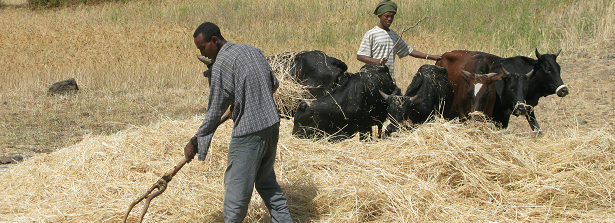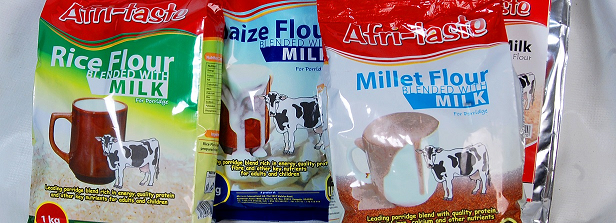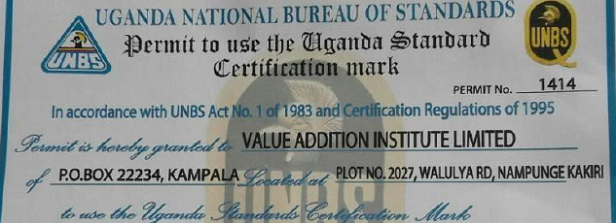Affordable protein fortified cereal products developed in Uganda (Afri-Taste)

Duration: January 2015 – January 2018. This project has been finalized.
Project information
Aim: To fortify first line cereals with milk protein in a bid, to provide affordable protein rich cereal flours especially for children and women.
Objective: Addressing the rampant malnutrition in the country.
Method: Developing a model for macronutrient fortification in Sub-Saharan Africa.
Countries: Uganda, Burundi, Rwanda and Southern Sudan.
Dutch policy goal: Improved access to nutrition.
Progress reports
Year 2: Most cereal fortification efforts to address malnutrition challenges focus on micro-nutrients. This project seeks to fortify first line cereals with milk protein in a bid to address the rampant malnutrition in the country. The initiative is expected to provide affordable protein rich cereal flours especially for children and women. The study will offer a model for macronutrient fortification in Sub-Saharan Africa.
Year 3: To support the consumption of protein rich cereal flours in Uganda, the research team started to analyze the composition and safety of the existing fortified flours in the region. The researchers also identified local fortifiers: suitable locally grown crops that could be used for improving the flour’s micronutrient content. Carrots, pumpkin seeds and amaranth seeds are currently being used to improve the micronutrient profile of the flours. The researchers therefore tested different combinations of fortifiers (carrots, pumpkin seeds and amaranth seeds) and flour types (maize, rice and millet). Combinations were analyzed for aspects such as moisture content, crude protein, crude fat, crude fiber, minerals and Vitamin A.
Porridges and gruels
The studies revealed that all fortified flours from the Value Addition Institute (VAI) have got an increased percentage crude protein, crude fat, fibre, vitamin A and minerals. Moreover, several of the tested combinations could be made cheaper than the current products on the market. Together with a more appealing packaging, this increases the chance that women buy fortified cereals. At the moment, fortified cereals are less popular. This is because the fortifiers slightly change the colour of the porridges and gruels, and most consumers don’t like this. The Value Addition Institute (VAI) is now selling its fortified cereals in supermarkets. In 2015, VAI pitched its new products in a national competition on accelerating social businesses and was selected among the best 15 companies.
Milk proteins
The researchers also tried to improve the process of fortifying cereals with milk proteins. They compared direct mixing of pasteurized milk with flour, and indirect mixing of concentrated milk with flour. Trials indicated that direct mixing works best. However, this experiment had to put on a halt as it required large scale and expensive mixers and driers. To solve this problem, the team has contacted possible suppliers of spray driers in the Netherlands, China and South Africa. Next step is to decide how to find equipment that will be appropriate for scaling up production of cereals fortified with milk proteins
Final report
Summary of the results: Affordable protein enriched cereal products developed in Uganda Cereal fortification efforts to address nutrition challenges have traditionally focused on micro-nutrients. This approach negates the fact that there are also nutritional challenges of macro-nutrient nature like protein energy deficiency. This project sought to use a macro-nutrient enhancement approach to improve the nutritional value of commonly consumed cereals in Uganda/East Africa.
Through this research, products enhanced with animal protein from cow’s milk have been significantly improved. The products have been produced and are being scaled with overwhelming consumer response. The project also resulted in development of new products that are instant but which need further perfection. Although the actual impact on malnutrition could not be ascertained in the short project period there is no doubt that anybody who takes cereal blend that has in milk, solves many nutritional challenges. The products are a whole meal according to nutritionists. The scaled products are widely sold in Uganda now and picking up in neighboring countries. All this would not have been possible without NWO-WOTRO product improvement support. VAI will continue seeking for other partnerships to further research on other aspects of the product like costs in order to reduce on price and cause universal consumption and accessibility of the products.


